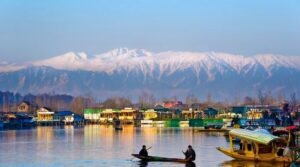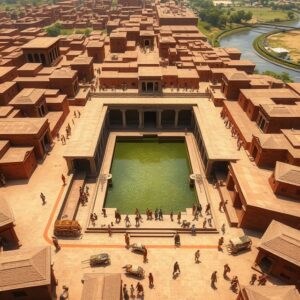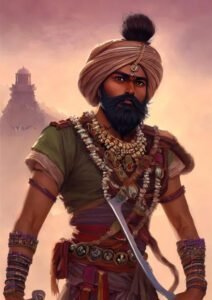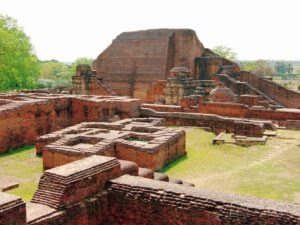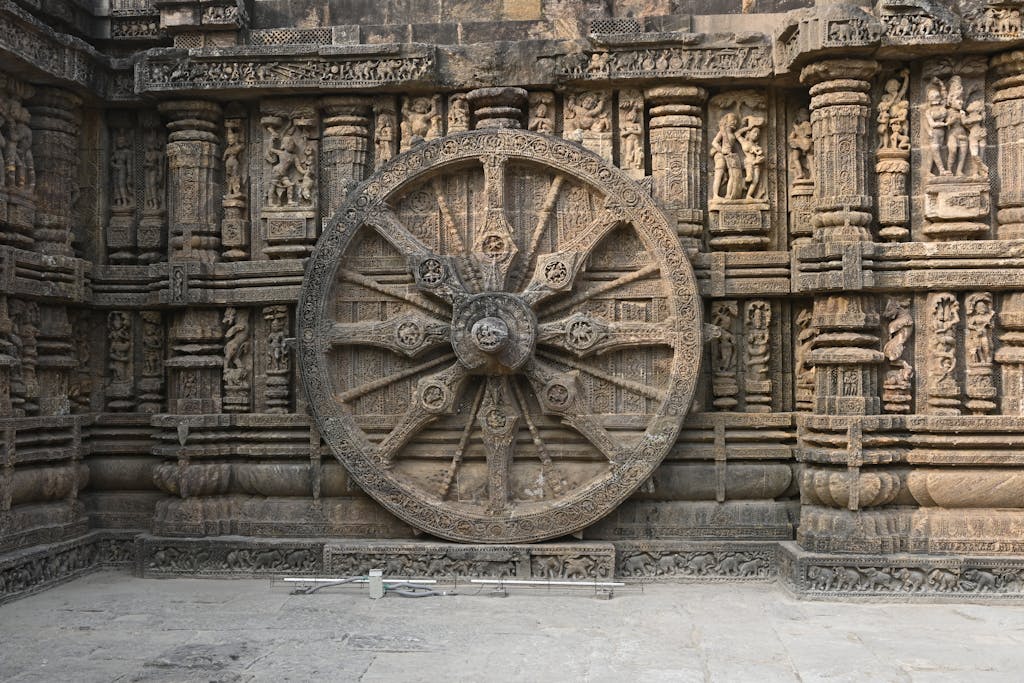The Pala Dynasty (8th–12th centuries CE) stands as one of the most influential dynasties in Indian history. Ruling over Bengal, Bihar, and parts of Odisha, Assam, and Uttar Pradesh, the Palas were instrumental in shaping the political, cultural, and religious landscape of India and neighboring regions. Their reign marked a golden age of intellectual achievement, Buddhist patronage, military campaigns, and artistic excellence. This article delves deeper into their achievements, wars, kings, controversies, and the key figures who defined the Pala era.
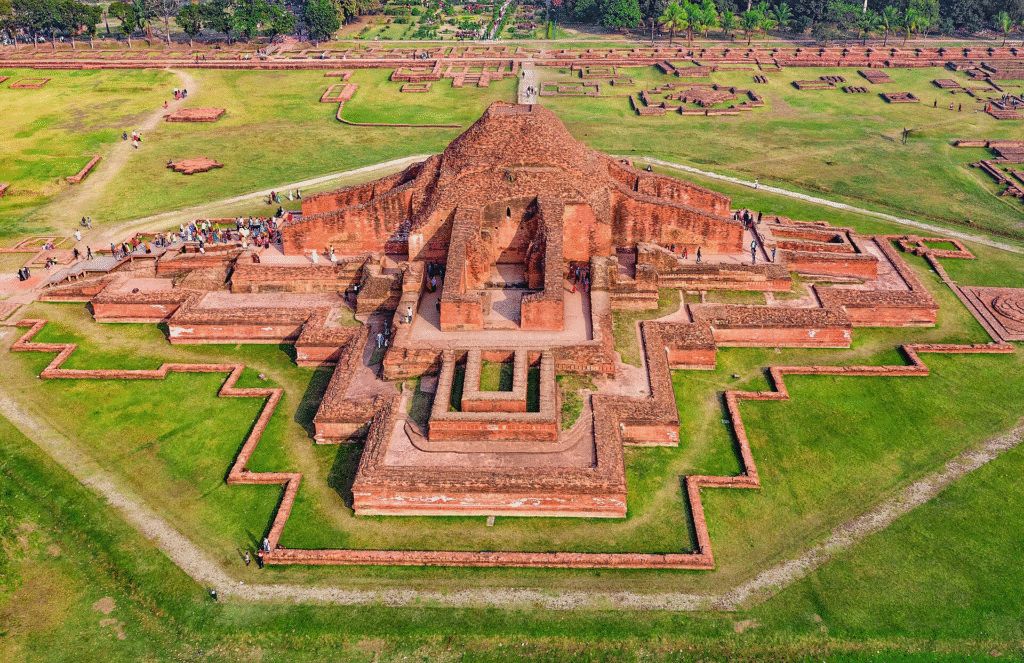
Dharmapala (reigned c. 775–810)
The Pala Dynasty: Bengal’s Buddhist Kings Who Ruled an Empire
In the misty plains of Bengal during the 8th century CE, chaos reigned. Rival chieftains clashed for supremacy after the fall of the Gauda kingdom, and Bengal itself was splintered. But out of this turmoil emerged an extraordinary moment in Indian history. A council of chiefs gathered and elected—not crowned—a new leader. His name was Gopala, and with his rise began the Pala dynasty, a line of kings who would rule for nearly four centuries, shaping the politics, culture, and faith of eastern India and beyond.
The Rise: Gopala and the Elected King
Gopala (r. 750–770 CE) is remembered less for conquest and more for the way he began his reign. The Palas stand out as the only example of an elective monarchy in Indian history. Once chosen, Gopala stabilized Bengal and established strong administration, giving his dynasty a firm foundation. What followed was an age of expansion and brilliance, where Buddhist philosophy, grand universities, and distinctive art flourished alongside military ambition.
Dharmapala: The Dream of Kannauj
Gopala’s son, Dharmapala (r. 770–810 CE), transformed the dynasty into a regional superpower. He set his sights on Kannauj, a city of immense political prestige in northern India.
- The Tripartite Struggle: For nearly two centuries, three great dynasties—the Palas in the east, the Gurjara-Pratiharas in the west, and the Rashtrakutas in the Deccan—fought over Kannauj. Dharmapala suffered battlefield defeats, yet through diplomacy and alliances, he placed his protégé, Chakrayudh, on the throne of Kannauj. For a time, Pala influence stretched across northern India.
- Patron of Buddhism: Dharmapala’s legacy lies equally in his devotion to Mahayana Buddhism. He founded Vikramashila University, a grand center of learning that rivaled Nalanda, specializing in advanced Buddhist philosophy and Tantric studies.
Dharmapala’s reign cemented the Palas as kings who wielded both the sword and the pen.
Devapala: The Zenith of Empire
If Dharmapala built the empire, it was his son Devapala (r. 810–850 CE) who carried it to its peak. Devapala expanded the empire to Assam, Odisha, Bihar, Nepal, and the Himalayan foothills. The Pala kingdom now stretched from the Bay of Bengal deep into northern India.
Under Devapala, Nalanda University blossomed as the greatest learning center of its age. Scholars arrived from Tibet, Nepal, and even distant Southeast Asia. Monks trained in Bengal carried Buddhist teachings as far as Java and Sumatra. The Palas under Devapala became not only rulers of Bengal but custodians of knowledge for the wider Buddhist world.
The Long Decline: Mahipala and Ramapala
After Devapala’s passing, the empire weakened. Internal feuds and relentless invasions chipped away at its unity.
- Mahipala I (r. 988–1038 CE) offered a brief revival, restoring lost territories and sponsoring temples. Yet his efforts could not reverse the long-term decline.
- Ramapala (r. 1077–1130 CE), the last great Pala king, regained parts of Bihar and Odisha. His reign is immortalized in Ramacharita by the poet Sandhyakar Nandi, a blend of history and legend that captures the grandeur of his court.
Still, the dynasty’s power waned. By the 12th century, the Sena dynasty had risen, ushering in a new era of Hindu revivalism in Bengal.
Culture, Faith, and Learning
Though the Palas struggled with shifting political fortunes, their cultural and intellectual legacy remained remarkably enduring.
Buddhism’s Last Great Age in India: The Palas were steadfast patrons of Mahayana Buddhism. Monasteries, stupas, and universities thrived under their care. They dispatched teachers to Tibet, where figures like Atisha Dipankara (980–1054 CE) became central to Tibetan Buddhism’s Golden Age.
Art and Architecture: Pala art is famous for its bronze and stone sculptures of serene Buddhas and Bodhisattvas. The style spread across Asia, influencing Tibetan, Nepali, and Southeast Asian traditions. Their terracotta plaques and temple carvings blended local artistry with Buddhist symbolism.
The Universities of Nalanda and Vikramashila: These centers of knowledge were the Oxford and Cambridge of their time, housing thousands of monks and scholars. The Palas’ investment in education made Bengal a global hub of intellectual exchange.
- Nalanda University was One of the world’s oldest universities, Nalanda reached its zenith under the Palas. It attracted scholars from as far as China (e.g., Xuanzang and Yijing), Korea, and Tibet. The Palas funded the construction of temples, libraries, and dormitories, making Nalanda a hub of Buddhist philosophy and science.
- Vikramashila University was Founded by Dharmapala, Vikramashila was a center for advanced Buddhist studies. It specialized in tantric Buddhism and had a structured system of education.
Important Personalities of the Pala Era
- Atisha Dipankara (980–1054 CE): A Buddhist monk and scholar from Bengal, Atisha was one of the most influential figures in the spread of Buddhism to Tibet. He studied at Vikramashila University and later became a revered teacher in Tibet.
- Sandhyakar Nandi: A court poet of the Palas, Sandhyakar Nandi authored the “Ramacharita,” a blend of history and mythology that provides valuable insights into the Pala period.
- Taranatha: A Tibetan historian, Taranatha documented the contributions of the Palas to Buddhism, emphasizing their role in its propagation.
Legacy of the Pala Dynasty
The dynasty was not without its critics. Their patronage of Buddhism coincided with a relative decline of Hindu institutions in Bengal, though Hinduism remained vibrant elsewhere. The elective nature of kingship, once a strength, sometimes caused succession crises. And their long rivalry in the Tripartite Struggle drained resources that might have otherwise fortified the empire.
When the Palas finally fell to the Senas in the 12th century, much of their world crumbled. Nalanda and Vikramashila would later be destroyed in the 13th century invasions, marking the twilight of Buddhism in India. Yet the Palas’ legacy lived on in the spread of Buddhism abroad and the enduring beauty of their art.
Bronze Buddhas from their era now rest in museums across the world, silent witnesses to a dynasty that made Bengal the heart of the Buddhist world for centuries.
Despite their decline, the Palas left an enduring legacy. Their support for education and art influenced the cultural landscape of India and Asia. Pala-style art continues to be admired globally for its elegance and spiritual depth. Their role in spreading Buddhism contributed to the development of Tibetan and Southeast Asian religious traditions.

